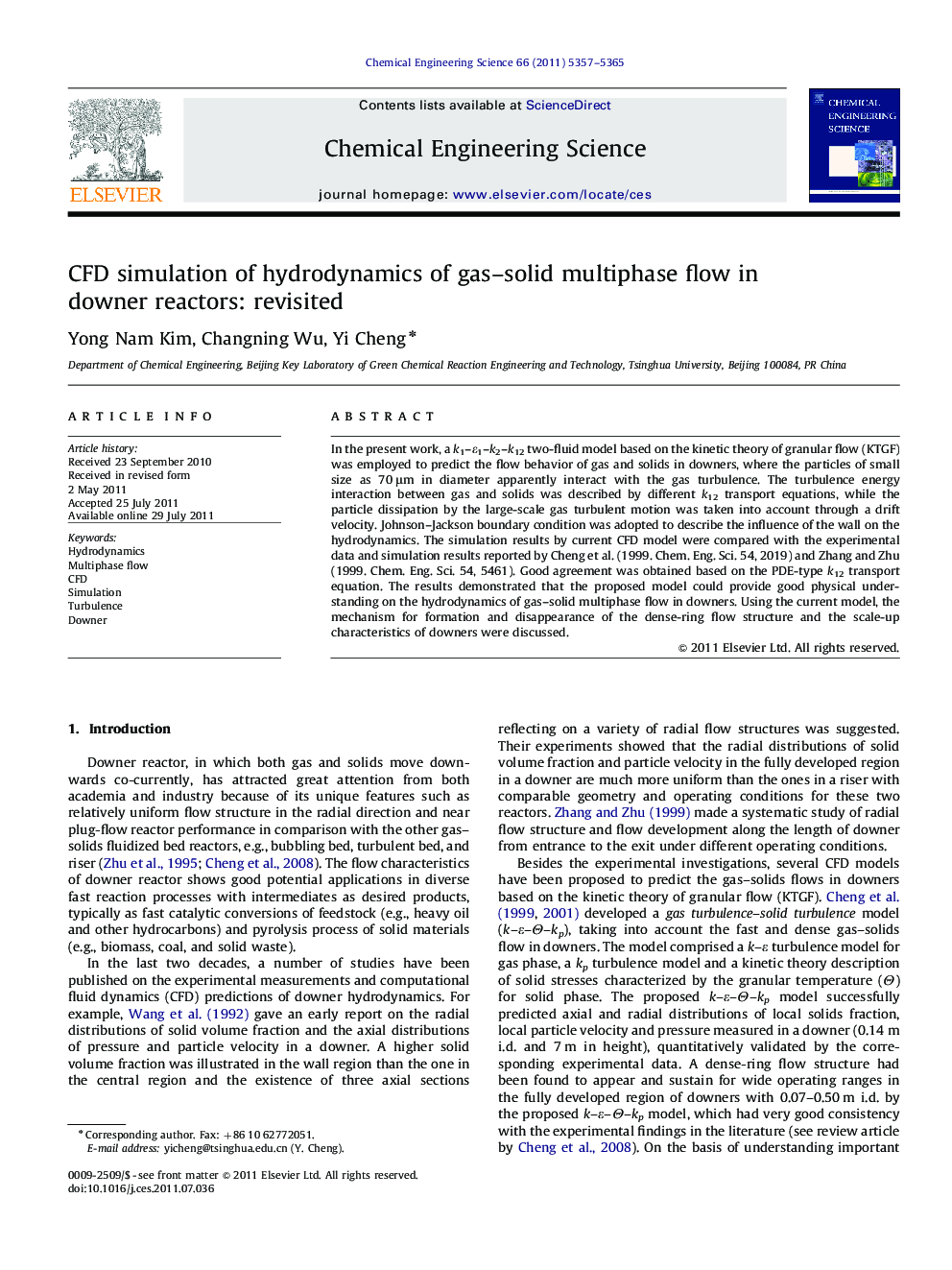| Article ID | Journal | Published Year | Pages | File Type |
|---|---|---|---|---|
| 156221 | Chemical Engineering Science | 2011 | 9 Pages |
In the present work, a k1–ε1–k2–k12 two-fluid model based on the kinetic theory of granular flow (KTGF) was employed to predict the flow behavior of gas and solids in downers, where the particles of small size as 70 μm in diameter apparently interact with the gas turbulence. The turbulence energy interaction between gas and solids was described by different k12 transport equations, while the particle dissipation by the large-scale gas turbulent motion was taken into account through a drift velocity. Johnson–Jackson boundary condition was adopted to describe the influence of the wall on the hydrodynamics. The simulation results by current CFD model were compared with the experimental data and simulation results reported by Cheng et al. (1999. Chem. Eng. Sci. 54, 2019) and Zhang and Zhu (1999. Chem. Eng. Sci. 54, 5461). Good agreement was obtained based on the PDE-type k12 transport equation. The results demonstrated that the proposed model could provide good physical understanding on the hydrodynamics of gas–solid multiphase flow in downers. Using the current model, the mechanism for formation and disappearance of the dense-ring flow structure and the scale-up characteristics of downers were discussed.
► We use a k1–ε1–k2–k12 two-fluid model to revisit the hydrodynamics in downers well. ► Particles of small size as 70 μm apparently interact with the gas turbulence. ► Formation and disappearance of the dense-ring flow structure were predicted well. ► Scale-up characteristics of downers were discussed based on the validated model.
